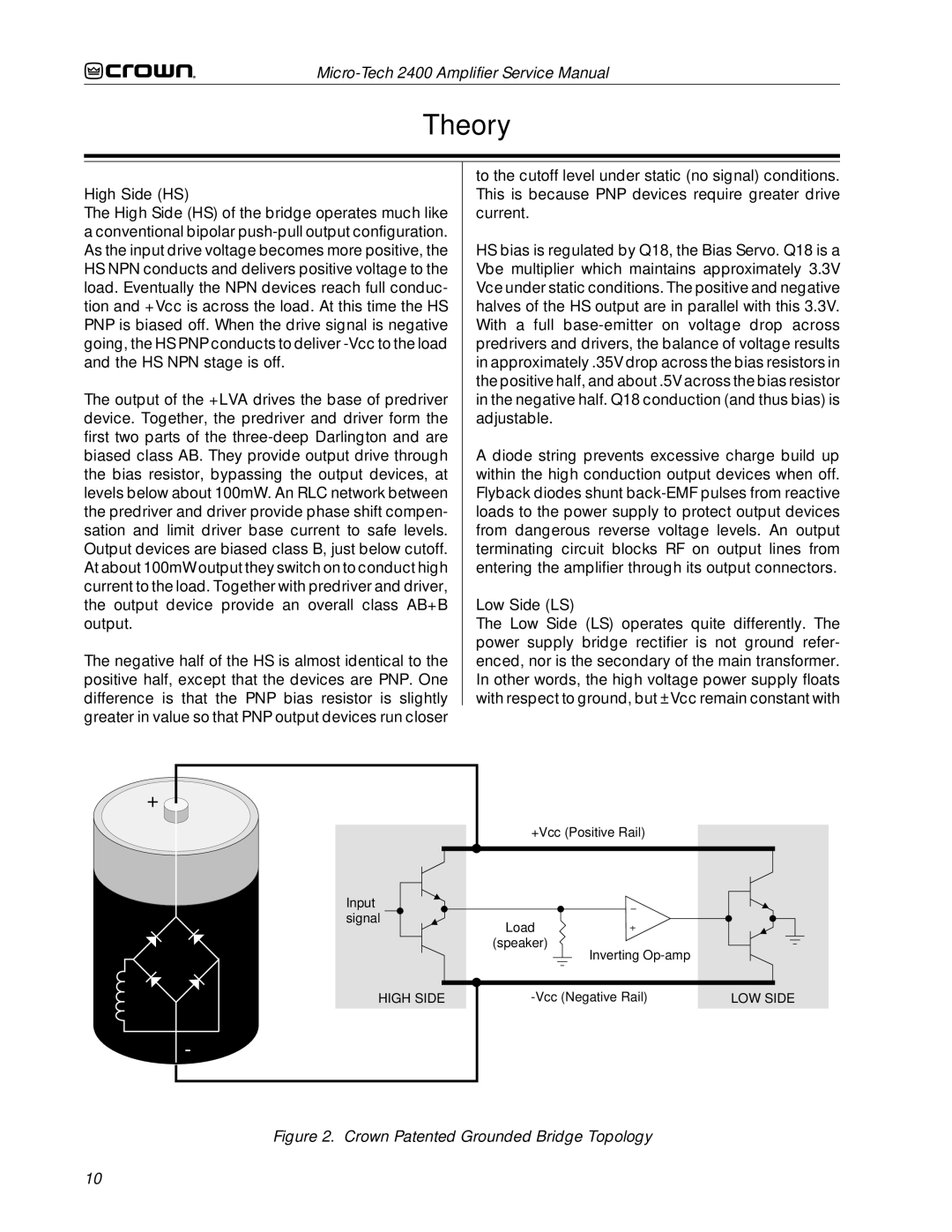2400 specifications
Crown Audio is a well-respected name in the audio industry, known for its powerful and reliable amplifiers. Among its notable products is the Crown Audio 2400, a high-performance amplifier that has garnered attention for its impressive range of features and technologies.The Crown 2400 is part of the XTi series, which is renowned for delivering exceptional sound quality and performance. A key feature of the 2400 is its innovative Class-I technology. This design allows the amplifier to remain highly efficient while producing substantial power output, making it suitable for a variety of applications, from live sound to installation settings. With a power rating of 2400 watts per channel at 4 ohms, the XTi 2400 provides ample power for driving multiple speakers, ensuring that audio can fill even the largest spaces.
Another standout characteristic of the Crown 2400 is its built-in DSP capabilities. This onboard digital signal processing allows users to tailor the audio output to their specific needs. The DSP features include adjustable crossover settings, EQ adjustments, delay settings, and limiting functions, all accessible through an intuitive LCD interface. This user-friendly design enables quick adjustments in real-time, which is critical in dynamic live performance environments.
The amplifier also boasts advanced connectivity options, including both XLR and 1/4-inch input connectors, allowing for versatile integration with various audio sources. Additionally, the inclusion of Speakon outputs provides secure and reliable connections to speakers, minimizing the risk of accidental disconnects during performance.
Thermal management is another area where the Crown 2400 excels. The amplifier is equipped with a comprehensive cooling system, which includes a variable-speed fan and extensive heat sinking. This design ensures that the amplifier operates efficiently even under heavy load, prolonging its lifespan and maintaining optimal performance.
Finally, the Crown Audio 2400 is designed with durability in mind. Its rugged construction makes it suitable for the rigors of touring and demanding live environments, reinforcing Crown's commitment to quality and reliability.
In conclusion, the Crown Audio 2400 stands out as a powerful and versatile amplifier, offering Class-I technology, robust onboard DSP, excellent connectivity options, advanced thermal management, and durable construction. These features make it an ideal choice for audio professionals seeking reliability and high performance in their sound systems.

